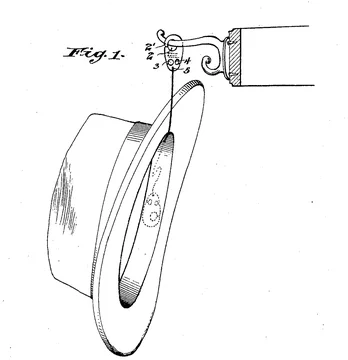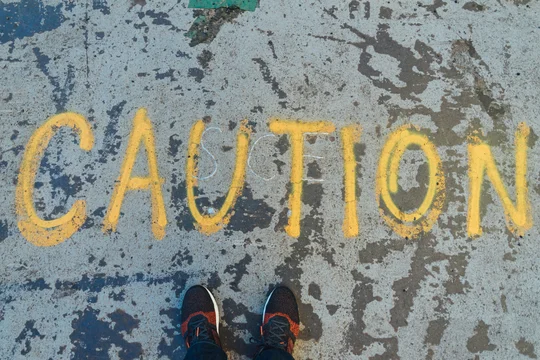
True D. Del. patent litigators know that, no matter which side you're on, you're going to have to narrow your claims and defenses before trial. It's just unwise and unworkable to go into a five-day trial with 100 claims, or with 30 prior art references and hundreds (or millions) of potential obviousness combinations. There isn't time to cover it all.
That said, sometimes the parties in patent cases delay case narrowing for a long time. And while the Court will often narrowing, it doesn't do that in every case. Instead, judges sometimes take the approach that "it's your trial time"—i.e., "it's your funeral."
As such, it's not uncommon for a plaintiff to drop claims, or even an entire patent, just before trial after it realizes it has to streamline its case. The Court has sometimes held that such voluntarily dropped claims are withdrawn with prejudice.
(The Court has permitted claims withdrawn due to forced narrowing, on the other hand, to be re-asserted if the patentee can show good cause).
Judge Noreika issued an opinion today in a case where the plaintiff dropped most of the claims in the case just minutes before trial, as the jury was taking their seats. The case went forward, and the jury ultimately found that the two remaining asserted claims were both invalid and not infringed.
The defendants then filed a JMOL motion for judgment of no infringement the dropped claims. It did not go well for the plaintiff:
In the proposed pretrial order, Plaintiff identified infringement of “claims 1-20 of the ’638 patent” as issues for trial. . . . Plaintiff did not narrow its case at the pretrial conference or before the Court adopted and entered Plaintiff’s proposal as part of the final pretrial order. . . . The morning of the trial, moments before the jury took their seats, the parties informed the Court that Plaintiff was withdrawing claims 2-8 and 10-20 of the Patent-in-Suit (“the withdrawn claims”) and choosing to proceed with only the Asserted Claims (claims 1 and 9). . . . This decision was seemingly made in response to the Court’s suggestion at the pretrial conference that the parties attempt to focus and narrow the issues for trial. . . .
The circumstances of Plaintiff’s withdrawal here warrant dismissal with prejudice. After nearly five years of litigation, Plaintiff dropped the withdrawn claims, quite literally, minutes before trial, Bio-Rad, No. 15-152 (RGA), at 1 (“[W]hen claims or counterclaims are dropped on the eve of trial, they are dropped with prejudice.”), when the “claims were poised for a final disposition,” Shure, 2022 WL 1718950, at *1, and without explanation, Bioverativ, 2021 WL 3471688, at *3 (dismissing with prejudice where plaintiff “offer[ed] no explanation as to why it decided to withdraw the [claims on the] Patent only once the case was ready for trial”). Defendants incurred great expense in getting to that point; they litigated three rounds of complaints, a motion to dismiss, the claim construction phase, summary judgment, and years of fact and expert discovery. . . .
After all of that time and effort, Plaintiff failed to bring its case on the dropped claims before the jury at a five-day trial. Dismissal without prejudice would allow Plaintiff a second bite at the apple, for up to 18 claims on the very same patent, perhaps even in a different forum. This is the very picture of prejudice. . . . Accordingly, the Court grants Defendants’ motion and dismisses the withdrawn claims with prejudice.
Tracktime, LLC v. Amazon.com Services LLC, C.A. No. 18-1518-MN (D. Del. Sept. 26, 2024).
The Court also included a footnote about how patentees often wait to narrow their cases—and about how their timing may be strategic:
The Court imposed no [claim narrowing] limits [in this action]. This District maintains a heavy docket of patent cases, where both plaintiffs and defendants regularly and strategically carry numerous claims and defenses deep into litigation before winnowing them. See, e.g., Bial-Portela & Ca. S.A. v. Alkem Labs. Ltd., No. 18-304 (CFC), 2022 WL 13944612, at *2 (D. Del. Oct. 24, 2022). “In [such] cases, plaintiffs routinely assert at the outset significantly more patent claims than they ever could realistically assert at trial. As trial approaches, plaintiffs reduce their asserted claims to a manageable number and defendants reduce their invalidity defenses.” Id.; Shure Inc. v. ClearOne, Inc., No. 19-1343 (RGA), 2022 WL 1718950, at *1 (D. Del. May 27, 2022) (“In the normal course of litigation, parties narrow claims and defenses as trial approaches.”). This is a simple matter of practicality: there are limits to the volume of what a jury or court can feasibly hear in a single time-delimited trial. See Alkem Labs., 2022 WL 13944612, at *2 (“The finite resources of this Court and the parties make this narrowing process necessary.”).
Was it a bad idea for patentee to drop the claims? No, not necessarily. It saved them from any risk of an invalidity finding at trial.
Was it a bad idea for patentee to wait to drop the claims, until just before trial? I don't know that there is a clear cut answer on this question either, with the facts we have. Yes, the patentee's claims are now dismissed with prejudice, after they waited to drop them. But it's not clear that dropping the claims a few weeks earlier, without being forced to do so by the Court, would have avoided a determination that they were dropped with prejudice.
If you enjoyed this post, consider subscribing to receive free e-mail updates about new posts.





